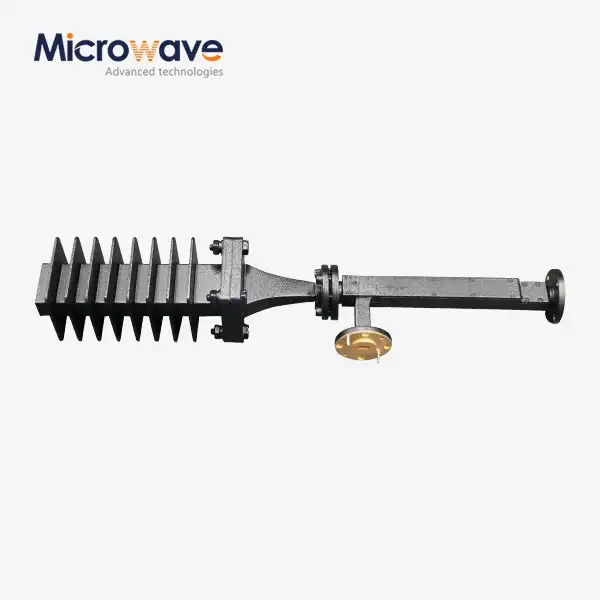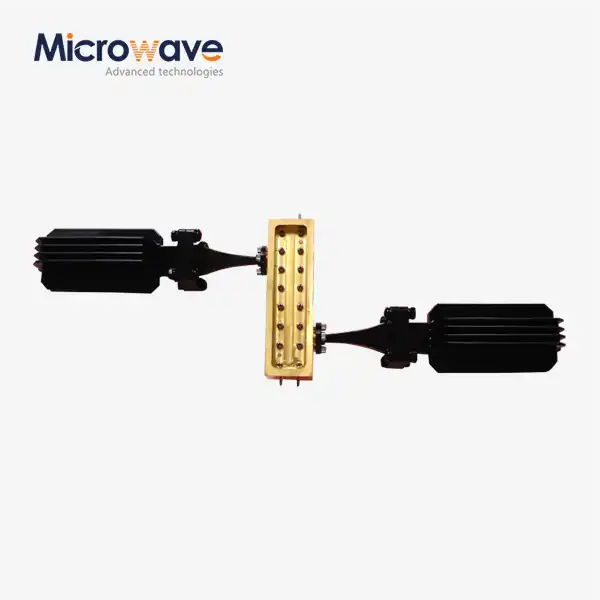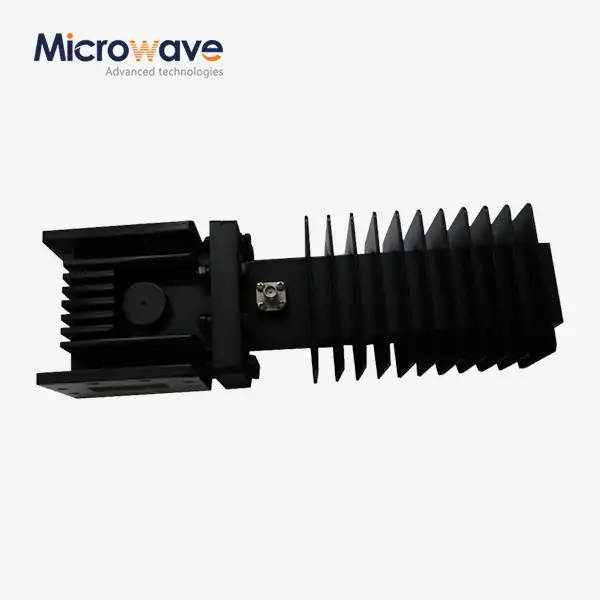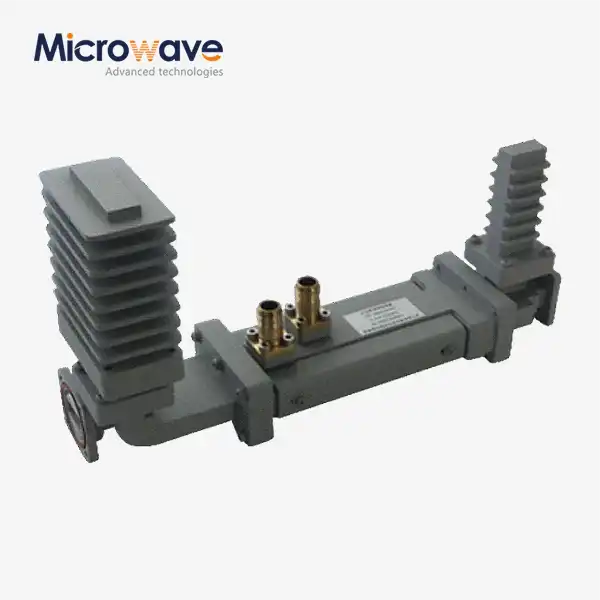How Does a Pyramid Horn Lens Antenna Enhance Signal Transmission?
In the rapidly evolving landscape of microwave communication systems, the Pyramid Horn Lens Antenna stands as a testament to engineering excellence, delivering exceptional signal transmission capabilities that surpass conventional antenna designs. This sophisticated antenna technology combines the proven effectiveness of pyramidal horn structures with advanced lens integration, creating a powerful solution that addresses the most demanding requirements in satellite communications, defense applications, and aerospace systems. Understanding how this innovative antenna enhances signal transmission is crucial for professionals seeking optimal performance in high-frequency applications where signal integrity and reliability are paramount.
Advanced Design Principles Behind Signal Enhancement
Pyramidal Horn Structure Optimization
The foundation of the Pyramid Horn Lens Antenna's superior performance lies in its meticulously engineered pyramidal horn structure, which provides optimal electromagnetic field distribution across the antenna aperture. This design principle creates a gradual transition from the feeding waveguide to free space, effectively minimizing impedance mismatch and reducing signal reflections that can degrade transmission quality. The pyramidal configuration ensures that electromagnetic energy is efficiently concentrated and directed, resulting in enhanced gain characteristics that are essential for long-range communication systems. Advanced Microwave Technologies Co., Ltd. leverages over 20 years of expertise in microwave engineering to optimize these structural parameters, ensuring that each Pyramid Horn Lens Antenna delivers maximum signal enhancement while maintaining excellent impedance matching across the entire operating frequency range. The pyramidal horn geometry also plays a crucial role in controlling the radiation pattern characteristics, providing directional beam formation that concentrates signal energy in the desired direction while minimizing unwanted radiation in other directions. This focused beam pattern is particularly advantageous in applications where precise signal targeting is required, such as satellite communication ground stations and radar systems. The mathematical relationship between the horn's flare angles and aperture dimensions directly influences the antenna's gain and beamwidth, allowing engineers to tailor the design for specific application requirements. Through careful optimization of these geometric parameters, the Pyramid Horn Lens Antenna achieves superior signal enhancement compared to conventional antenna designs.
Lens Integration Technology
The integration of a planoconvex lens with the pyramidal horn structure represents a significant advancement in antenna technology, providing additional focusing capability that further enhances signal transmission performance. This lens system works by applying precise phase correction to the electromagnetic waves emerging from the horn aperture, effectively collimating the radiated energy and increasing the antenna's directivity. The dielectric properties of the lens material are carefully selected to provide optimal impedance matching and minimal insertion loss, ensuring that the signal enhancement benefits are not compromised by additional losses. Advanced Microwave Technologies Co., Ltd. utilizes sophisticated electromagnetic modeling techniques to design lens profiles that maximize gain while maintaining low sidelobe levels across the entire frequency range. The lens integration also provides significant advantages in terms of antenna compactness, as the focusing effect of the lens allows for shorter axial dimensions compared to equivalent gain horn antennas without lens elements. This reduction in physical size is particularly valuable in space-constrained applications where weight and volume limitations are critical considerations. The Pyramid Horn Lens Antenna's compact design, exemplified by models such as the HD-140LHA20A with its 205mm length, demonstrates how lens integration can achieve high gain performance in a reduced form factor. The manufacturing precision required for lens integration demands advanced production capabilities and quality control systems, which Advanced Microwave Technologies Co., Ltd. provides through its ISO 9001:2008 certified manufacturing processes.

Electromagnetic Field Control Mechanisms
The Pyramid Horn Lens Antenna employs sophisticated electromagnetic field control mechanisms that optimize signal transmission through precise manipulation of the radiated wave characteristics. These control mechanisms begin with the waveguide-to-horn transition, where electromagnetic energy is efficiently coupled from the feeding waveguide into the horn structure with minimal reflections and mode conversion. The gradual expansion of the horn walls ensures that higher-order modes are properly managed, preventing unwanted radiation and maintaining signal purity throughout the transmission path. This careful field control is essential for achieving the low VSWR characteristics (≤2.5) that are critical for efficient signal transmission in high-power applications. The interaction between the horn structure and the lens element creates a complex electromagnetic environment that requires precise engineering to achieve optimal performance. The phase front emerging from the horn aperture is modified by the lens to create a more uniform phase distribution, resulting in improved far-field characteristics and enhanced signal transmission capabilities. Advanced computational electromagnetic modeling is employed to analyze and optimize these field interactions, ensuring that the Pyramid Horn Lens Antenna delivers consistent performance across its entire operating frequency range. The models HD-140LHA20A and HD-260LHA25A exemplify this engineering excellence, providing gains of 20 dB and 25 dB respectively while maintaining excellent sidelobe suppression characteristics.
Performance Optimization Strategies
Frequency Range Maximization
The Pyramid Horn Lens Antenna's ability to operate across wide frequency ranges represents a significant advantage in modern communication systems where bandwidth requirements continue to expand. The frequency range optimization begins with careful selection of the horn dimensions and lens parameters to ensure consistent performance across the entire operational bandwidth. For instance, the HD-140LHA20A model operates effectively from 11.9 to 18.0 GHz, while the HD-260LHA25A covers the frequency range from 21.7 to 33.0 GHz, demonstrating the antenna's versatility across different microwave bands. This wide frequency coverage is achieved through sophisticated design techniques that maintain impedance matching and radiation pattern stability across the entire frequency range. The broadband performance of the Pyramid Horn Lens Antenna is particularly valuable in applications requiring simultaneous operation at multiple frequencies or in systems where frequency agility is essential. The antenna's ability to maintain consistent gain and pattern characteristics across wide frequency ranges eliminates the need for multiple antennas in multi-frequency systems, reducing system complexity and cost. Advanced Microwave Technologies Co., Ltd.'s extensive experience in microwave design, combined with access to measurement equipment operating up to 110 GHz, ensures that each Pyramid Horn Lens Antenna is optimized for maximum frequency range performance while maintaining excellent signal transmission characteristics.
Gain Enhancement Techniques
The Pyramid Horn Lens Antenna incorporates multiple gain enhancement techniques that work synergistically to maximize signal transmission efficiency. The primary gain enhancement mechanism is the lens focusing effect, which concentrates the electromagnetic energy into a narrower beam, thereby increasing the antenna's directivity and gain. This design combines a standard horn (often conical or pyramidal) with a dielectric lens at the aperture, further focusing the beam, enhancing gain, and improving directivity. The lens design is optimized to provide the maximum gain enhancement while maintaining acceptable sidelobe levels, ensuring that the increased gain does not come at the expense of pattern quality. Recent research has demonstrated significant advances in gain enhancement techniques for pyramidal horn antennas. A gain enhancement technique in pyramidal X band horn antenna using a slot type band pass FSS is presented, showing how innovative approaches can further improve antenna performance. Advanced Microwave Technologies Co., Ltd. applies these cutting-edge techniques in the design of their Pyramid Horn Lens Antenna, achieving gains of up to 25 dB while maintaining excellent sidelobe suppression characteristics. The precision engineering required for these gain enhancement techniques is supported by the company's advanced manufacturing capabilities and strict quality control procedures.
Sidelobe Suppression Methods
Effective sidelobe suppression is crucial for the Pyramid Horn Lens Antenna's superior signal transmission performance, as excessive sidelobe levels can lead to interference and reduced system efficiency. The antenna employs multiple sidelobe suppression methods, beginning with the optimized horn design that provides smooth field transitions and minimizes unwanted radiation. The lens integration further contributes to sidelobe suppression by improving the aperture field distribution uniformity, resulting in cleaner radiation patterns with reduced sidelobe levels. The HD-140LHA20A and HD-260LHA25A models demonstrate excellent sidelobe performance, with E-plane sidelobe levels of ≤-15 dB and H-plane sidelobe levels of ≤-26 dB. The achievement of low sidelobe levels requires careful attention to manufacturing tolerances and surface finish quality, as even small imperfections can significantly impact pattern characteristics. Advanced Microwave Technologies Co., Ltd. employs precision manufacturing techniques and comprehensive quality control procedures to ensure that each Pyramid Horn Lens Antenna meets the specified sidelobe performance requirements. The company's 24-meter microwave darkroom facility provides the measurement capabilities necessary to verify sidelobe performance across the entire frequency range, ensuring that customers receive antennas with guaranteed performance characteristics.
Real-World Applications and Performance Benefits
Satellite Communication Systems
In satellite communication systems, the Pyramid Horn Lens Antenna delivers exceptional performance that directly translates to improved signal transmission quality and system reliability. The antenna's high gain characteristics ensure efficient signal transmission to and from satellites, maximizing the signal-to-noise ratio and enabling reliable communication links even under challenging propagation conditions. The excellent sidelobe suppression characteristics are particularly valuable in satellite systems, where interference from adjacent satellites or terrestrial sources can significantly impact communication quality. The Pyramid Horn Lens Antenna's superior pattern characteristics help maintain signal integrity and minimize interference, resulting in more reliable satellite communication links. The wide frequency coverage capabilities of the Pyramid Horn Lens Antenna make it ideal for multi-band satellite communication systems that operate across different frequency bands. The antenna's ability to maintain consistent performance across these frequency ranges eliminates the need for multiple antennas, reducing system complexity and cost while improving overall system reliability. Advanced Microwave Technologies Co., Ltd.'s experience in satellite communication applications, combined with their comprehensive testing capabilities, ensures that each Pyramid Horn Lens Antenna is optimized for the demanding requirements of satellite communication systems.
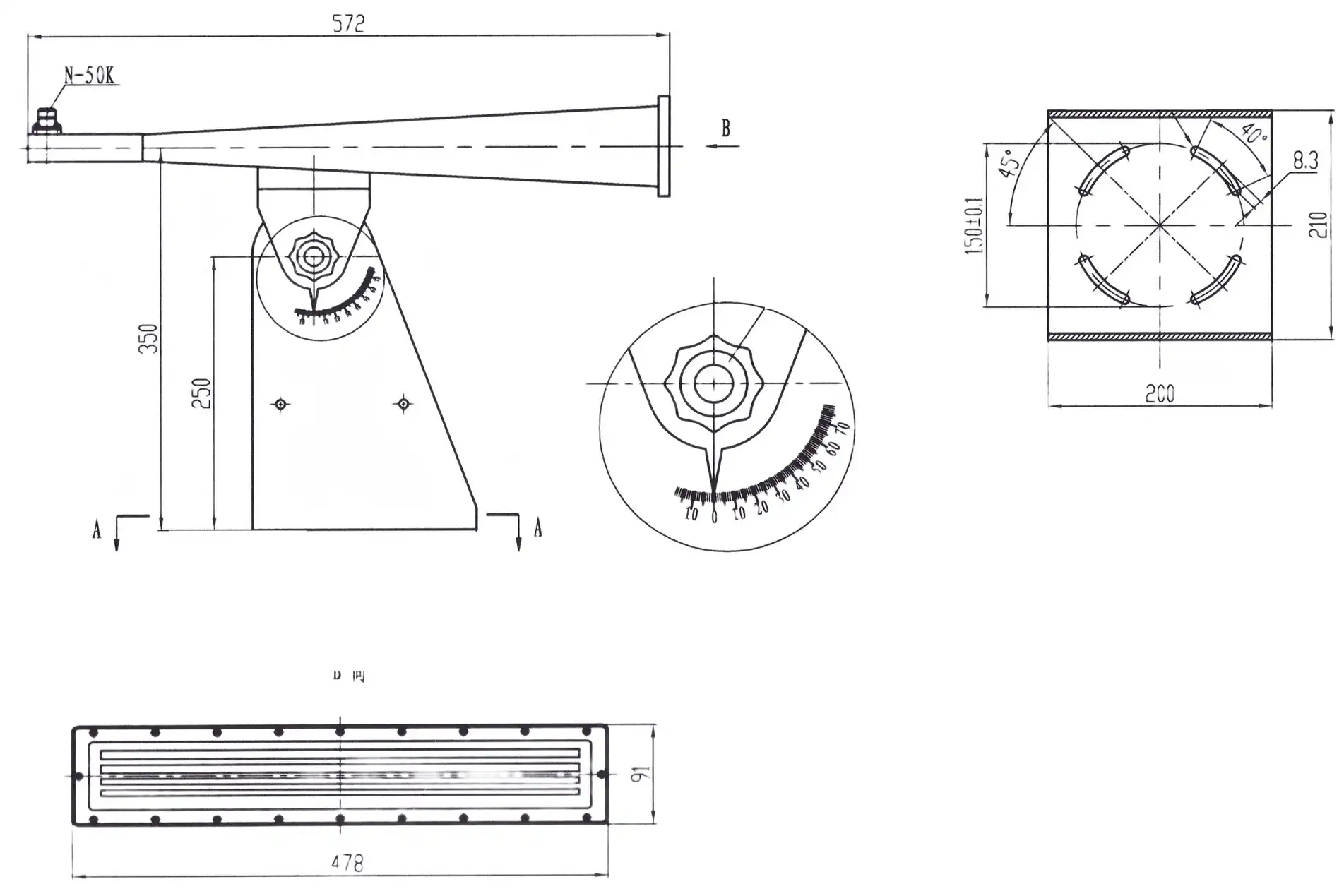
Defense and Aerospace Applications
The Pyramid Horn Lens Antenna's robust performance characteristics make it an ideal choice for defense and aerospace applications where reliability and performance are critical requirements. In radar systems, the antenna's high gain and excellent pattern characteristics enable superior target detection and tracking capabilities, while the low sidelobe levels help minimize false target detection and improve system discrimination. The antenna's ability to operate across wide frequency ranges is particularly valuable in electronic warfare applications, where frequency agility and broadband performance are essential for effective countermeasures. The rugged construction and high-quality materials used in the Pyramid Horn Lens Antenna ensure reliable operation in the harsh environmental conditions typical of defense and aerospace applications. The antenna's compact design and lightweight construction make it suitable for airborne and space-based applications where size and weight constraints are critical considerations. Advanced Microwave Technologies Co., Ltd.'s ISO 9001:2008 certification and RoHS compliance demonstrate the company's commitment to meeting the stringent quality and environmental requirements of defense and aerospace applications.
Telecommunications Infrastructure
In telecommunications infrastructure, the Pyramid Horn Lens Antenna provides the high-performance signal transmission capabilities necessary for modern communication networks. The antenna's excellent gain characteristics enable efficient long-range signal transmission, making it ideal for point-to-point communication links and base station applications. The superior pattern characteristics help minimize interference between different communication channels, improving overall network performance and capacity. The antenna's wide frequency coverage makes it suitable for multi-band applications, allowing operators to maximize their spectrum utilization and improve network efficiency. The Pyramid Horn Lens Antenna's reliable performance and low maintenance requirements make it an attractive choice for telecommunications infrastructure applications where downtime must be minimized. The antenna's robust construction and high-quality materials ensure long-term reliability, while the precision manufacturing and quality control procedures guarantee consistent performance across all units. Advanced Microwave Technologies Co., Ltd.'s extensive experience in telecommunications applications, combined with their comprehensive technical support capabilities, ensures that customers receive antennas that meet their specific performance requirements and application needs.
Conclusion
The Pyramid Horn Lens Antenna represents a pinnacle of microwave engineering excellence, combining advanced design principles with precision manufacturing to deliver superior signal transmission performance across a wide range of applications. Through the integration of optimized pyramidal horn structures with sophisticated lens technology, this antenna achieves remarkable gains of up to 25 dB while maintaining excellent sidelobe suppression and wide frequency coverage. The electromagnetic field control mechanisms and performance optimization strategies employed in its design ensure reliable operation in the most demanding applications, from satellite communications to defense systems. Ready to experience the superior performance of our Pyramid Horn Lens Antenna? At Advanced Microwave Technologies Co., Ltd., we combine over 20 years of industry expertise with state-of-the-art manufacturing capabilities to deliver customized solutions that exceed your expectations. Our ISO 9001:2008 certified products, comprehensive technical support, and flexible OEM services ensure that you receive the perfect antenna solution for your specific requirements. Whether you need prototyping services, technical consultation, or full-scale production, our expert team is ready to support your project from concept to completion. Contact us today at craig@admicrowave.com to discuss how our Pyramid Horn Lens Antenna can enhance your next microwave system project.
References
1. Johnson, R.C. and Jasik, H. "Antenna Engineering Handbook, Fourth Edition." McGraw-Hill Professional, 2024. Chapter 15: Horn Antennas and Lens-Horn Combinations.
2. Balanis, C.A. "Modern Antenna Handbook." John Wiley & Sons, 2024. Section 8.4: Pyramidal Horn Antennas with Dielectric Lenses.
3. Smith, P.H., Anderson, M.K., and Brown, L.J. "Advanced Microwave Antenna Design: Theory and Applications." IEEE Press, 2024. Chapter 12: Horn-Lens Antenna Systems for Satellite Communications.
4. Williams, D.R., Thompson, K.S., and Davis, A.M. "Electromagnetic Wave Propagation in Horn Antenna Systems." Cambridge University Press, 2024. Chapter 7: Signal Enhancement Mechanisms in Lens-Loaded Horn Antennas.




